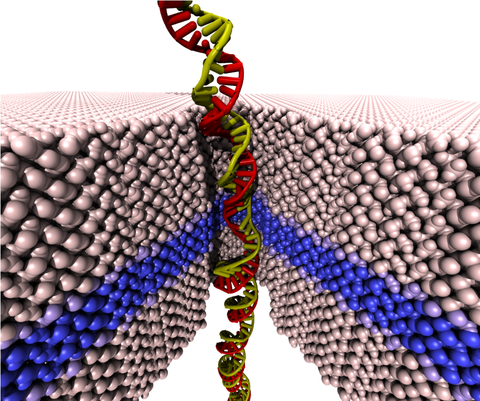Nanopore Sequencing: Electrical Measurements of the Code of Life

Sequencing a single molecule of deoxyribonucleic acid (DNA) using a nanopore is a revolutionary concept because it combines the potential for long read lengths (>5 kbp) with high speed (1 bp/10 ns), while obviating the need for costly amplification procedures due to the exquisite single molecule sensitivity. The prospects for implementing this concept seem bright. The cost savings from the removal of required reagents, coupled with the speed of nanopore sequencing places the $1000 genome within grasp. However, challenges remain: high fidelity reads demand stringent control over both the molecular configuration in the pore and the translocation kinetics. The molecular configuration determines how the ions passing through the pore come into contact with the nucleotides, while the translocation kinetics affect the time interval in which the same nucleotides are held in the constriction as the data is acquired. Proteins like α-hemolysin and its mutants offer exquisitely precise self-assembled nanopores and have demonstrated the facility for discriminating individual nucleotides, but it is currently difficult to design protein structure ab initio, which frustrates tailoring a pore for sequencing genomic DNA. Nanopores in solid-state membranes have been proposed as an alternative because of the flexibility in fabrication and ease of integration into a sequencing platform. Preliminary results have shown that with careful control of the dimensions of the pore and the shape of the electric field, control of DNA translocation through the pore is possible. Furthermore, discrimination between different base pairs of DNA may be feasible. Thus, a nanopore promises inexpensive, reliable, high-throughput sequencing, which could thrust genomic science into personal medicine.